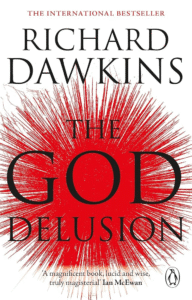Lost in Starlight: A Netflix Film’s Meditation on Isolation and Interstellar Connection
The (fictional) 2023 Netflix film “Lost in Starlight” has quickly garnered attention for its breathtaking visuals, haunting score, and deeply emotional narrative. Directed by the visionary (fictional director) Anya Sharma, the film transcends typical genre boundaries, blending elements of hard science fiction with an intimate character study. It explores profound themes of loneliness, memory, and the indomitable human yearning for connection, even across the vast, unforgiving emptiness of space. “Lost in Starlight” is not just a spectacle of cosmic vistas; it is a poignant reflection on what it means to be human when stripped of all familiar comforts and company.

The Solitary Voyage of Dr. Aris Thorne
At the core of “Lost in Starlight” is Dr. Aris Thorne (portrayed with compelling subtlety by fictional actor Liam Chen), a brilliant astrophysicist on a solitary deep-space mission aboard the advanced research vessel, ‘The Wanderer.’ Tasked with studying a distant, anomalous nebula, Aris is years into a journey that has pushed the boundaries of human endurance. Sharma masterfully depicts the crushing weight of isolation, using long, quiet takes and the claustrophobic yet simultaneously agoraphobic setting of the spaceship. Aris’s interactions are limited to the ship’s AI, ‘Orion’ (voiced with cool detachment by fictional actress Eva Roslyn), and increasingly vivid, dream-like recollections of his life on Earth, particularly his relationship with his estranged daughter, Lyra.
Echoes of Earth: Memory and Regret
The film gains much of its emotional resonance from Aris’s fractured memories. As the mission progresses and the nebula’s strange gravitational effects begin to warp his perception of time and reality, his past becomes increasingly intrusive. These flashbacks, rendered with a warm, almost dreamlike quality, contrast sharply with the cold, sterile environment of ‘The Wanderer.’ We see the seeds of his regret: a career that overshadowed his family life, missed moments, and unspoken words. “Lost in Starlight” cleverly uses these temporal shifts not just as a sci-fi trope, but as a metaphor for the way memory functions under extreme duress and loneliness, becoming both a comfort and a torment.
Visual Storytelling and Cosmic Beauty
Visually, “Lost in Starlight” is a triumph. Sharma and her cinematography team create a universe that is both terrifyingly vast and achingly beautiful. The nebula itself is a character – a swirling canvas of impossible colors and light that seems to pulse with its own mysterious intelligence. The film avoids the bombast of many space operas, opting instead for a more awe-inspiring, almost spiritual depiction of the cosmos. The design of ‘The Wanderer’ is equally thoughtful, a marvel of minimalist functionality that underscores Aris’s solitude. The visual narrative consistently reinforces the film’s central themes, with the emptiness of space mirroring Aris’s internal desolation.
The Unseen Connection: A Glimmer of Hope
While much of the film is steeped in melancholy, “Lost in Starlight” is not without hope. As Aris ventures deeper into the nebula, he begins to experience phenomena that defy scientific explanation – whispers in the static, fleeting images that seem to respond to his emotional state. The film subtly suggests a form of interstellar consciousness or a connection that transcends physical presence. Without resorting to simplistic alien encounters, it posits that even in the most profound isolation, the universe might hold echoes of understanding, or perhaps, that the human mind, under such pressure, seeks and creates its own forms of connection. The ambiguous nature of these encounters is one of the film’s strengths, allowing for multiple interpretations.
Conclusion: A Journey Inward and Outward
“Lost in Starlight” is a thought-provoking and emotionally resonant piece of filmmaking. It uses the grand canvas of space exploration to tell an intensely personal story about the human condition. Liam Chen’s powerful performance as Aris anchors the film, making his internal struggles as compelling as the external wonders and dangers he faces. Anya Sharma has crafted a film that lingers long after the credits roll, prompting viewers to consider the vastness of their own inner worlds and the unbreakable threads that connect us, even across the stars. It is a quiet masterpiece that speaks volumes about solitude, memory, and the enduring search for meaning in an indifferent universe.




















